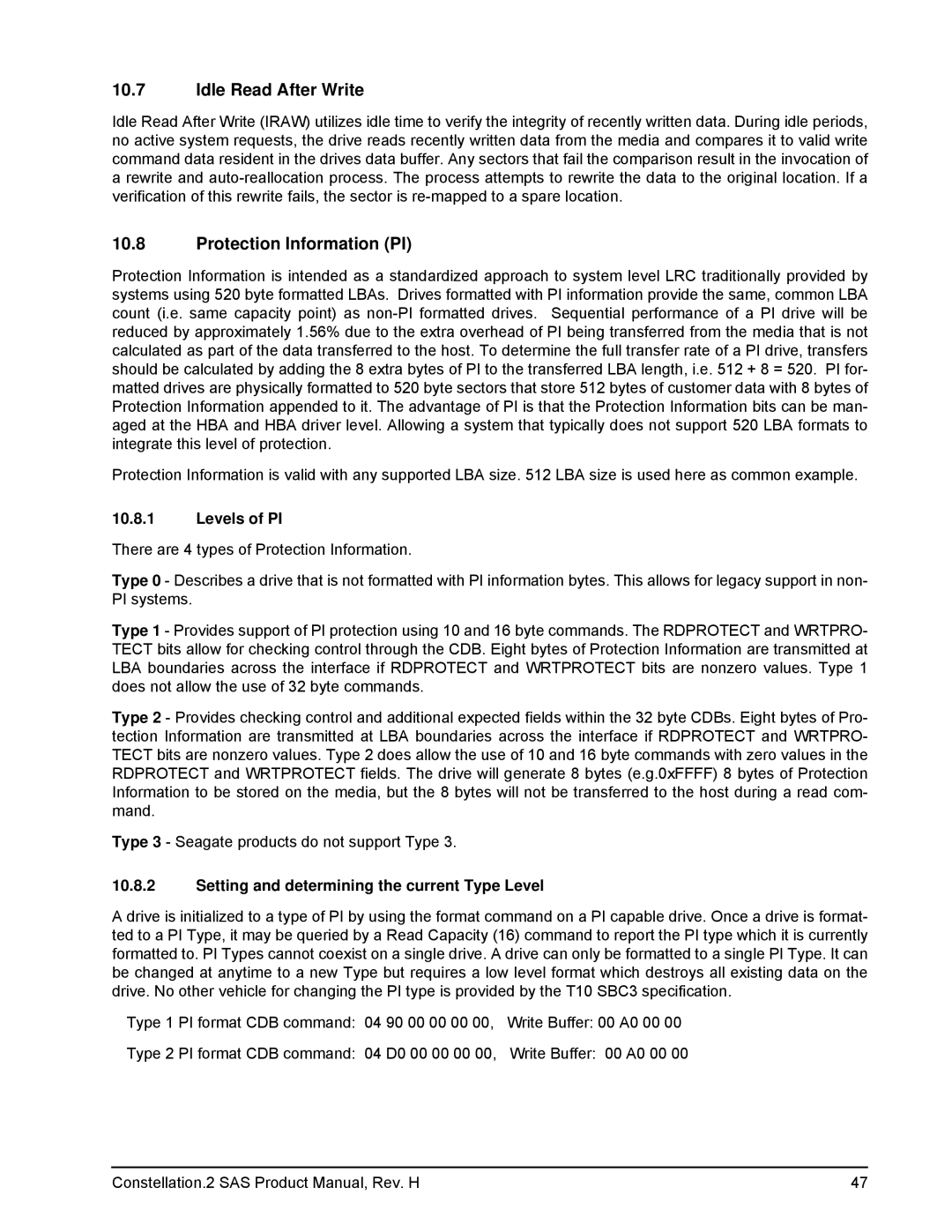10.7Idle Read After Write
Idle Read After Write (IRAW) utilizes idle time to verify the integrity of recently written data. During idle periods, no active system requests, the drive reads recently written data from the media and compares it to valid write command data resident in the drives data buffer. Any sectors that fail the comparison result in the invocation of a rewrite and
10.8Protection Information (PI)
Protection Information is intended as a standardized approach to system level LRC traditionally provided by systems using 520 byte formatted LBAs. Drives formatted with PI information provide the same, common LBA count (i.e. same capacity point) as
Protection Information is valid with any supported LBA size. 512 LBA size is used here as common example.
10.8.1Levels of PI
There are 4 types of Protection Information.
Type 0 - Describes a drive that is not formatted with PI information bytes. This allows for legacy support in non- PI systems.
Type 1 - Provides support of PI protection using 10 and 16 byte commands. The RDPROTECT and WRTPRO- TECT bits allow for checking control through the CDB. Eight bytes of Protection Information are transmitted at LBA boundaries across the interface if RDPROTECT and WRTPROTECT bits are nonzero values. Type 1 does not allow the use of 32 byte commands.
Type 2 - Provides checking control and additional expected fields within the 32 byte CDBs. Eight bytes of Pro- tection Information are transmitted at LBA boundaries across the interface if RDPROTECT and WRTPRO- TECT bits are nonzero values. Type 2 does allow the use of 10 and 16 byte commands with zero values in the RDPROTECT and WRTPROTECT fields. The drive will generate 8 bytes (e.g.0xFFFF) 8 bytes of Protection Information to be stored on the media, but the 8 bytes will not be transferred to the host during a read com- mand.
Type 3 - Seagate products do not support Type 3.
10.8.2Setting and determining the current Type Level
A drive is initialized to a type of PI by using the format command on a PI capable drive. Once a drive is format- ted to a PI Type, it may be queried by a Read Capacity (16) command to report the PI type which it is currently formatted to. PI Types cannot coexist on a single drive. A drive can only be formatted to a single PI Type. It can be changed at anytime to a new Type but requires a low level format which destroys all existing data on the drive. No other vehicle for changing the PI type is provided by the T10 SBC3 specification.
Type 1 PI format CDB command: | 04 | 90 00 00 00 00, | Write Buffer: 00 A0 00 00 |
Type 2 PI format CDB command: | 04 | D0 00 00 00 00, | Write Buffer: 00 A0 00 00 |
Constellation.2 SAS Product Manual, Rev. H | 47 |
